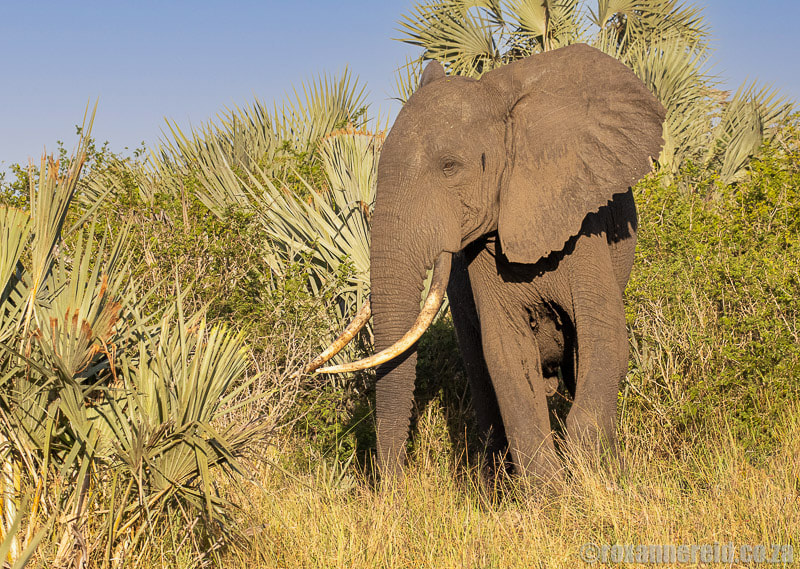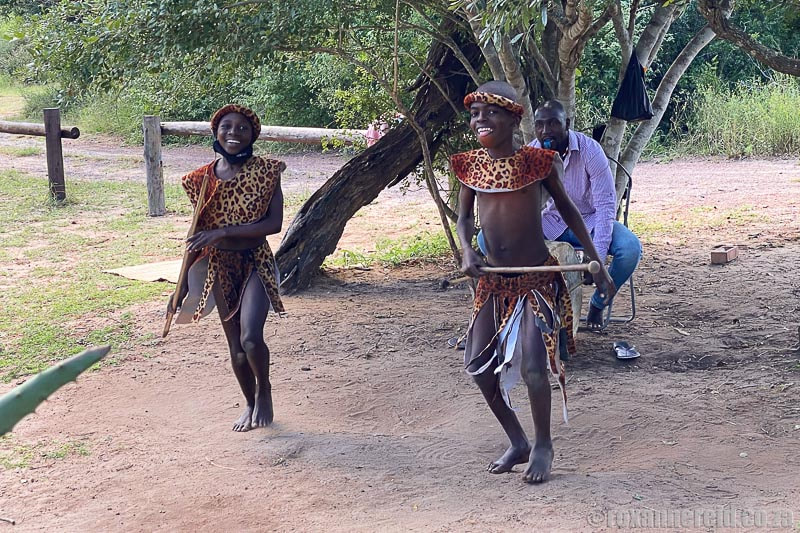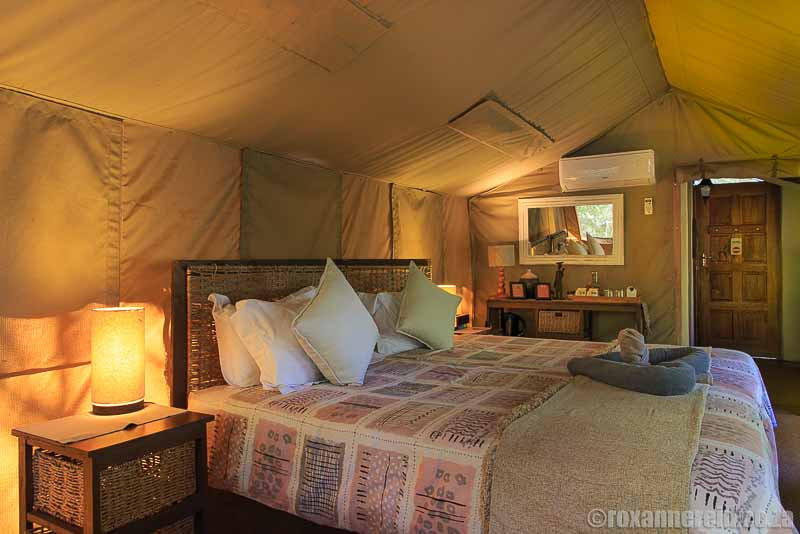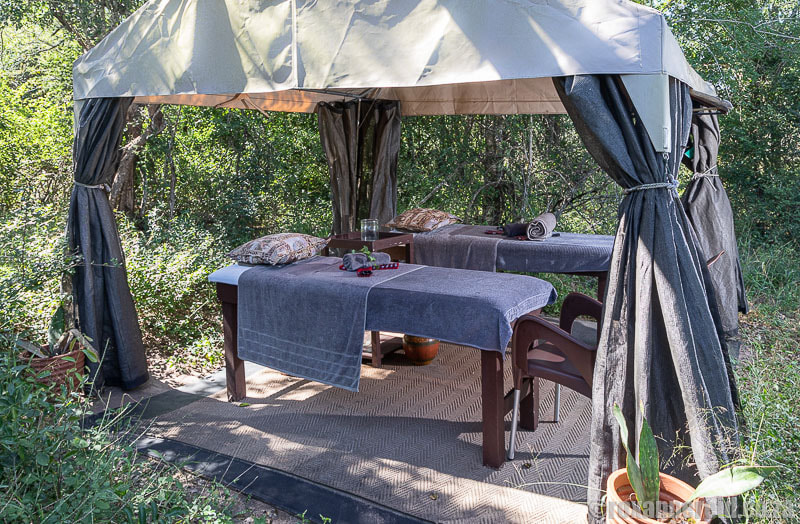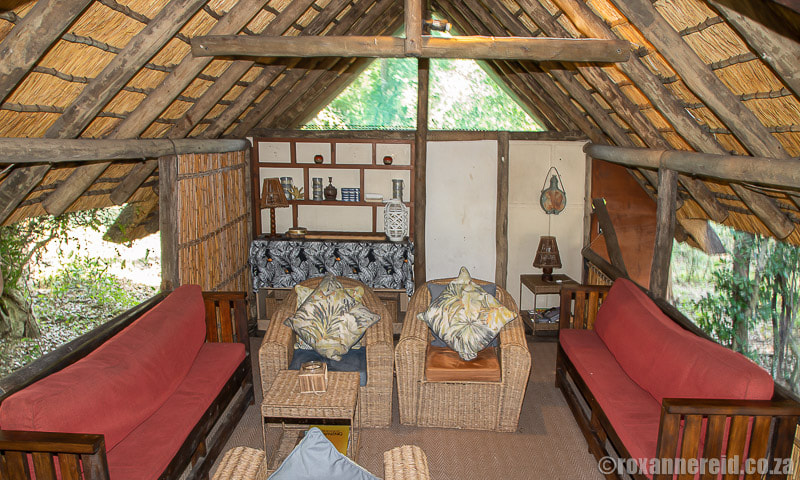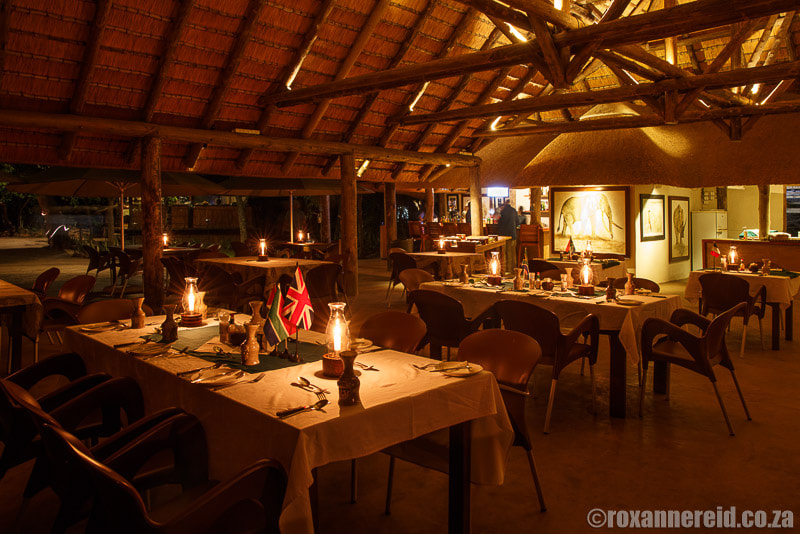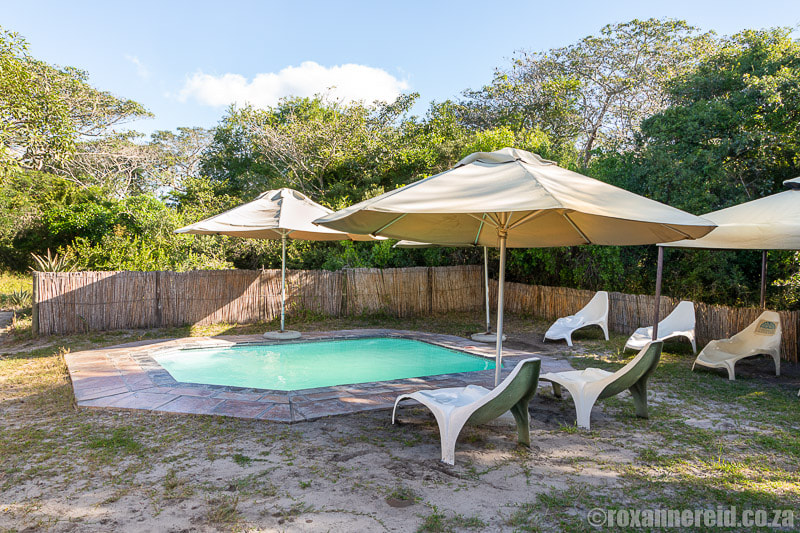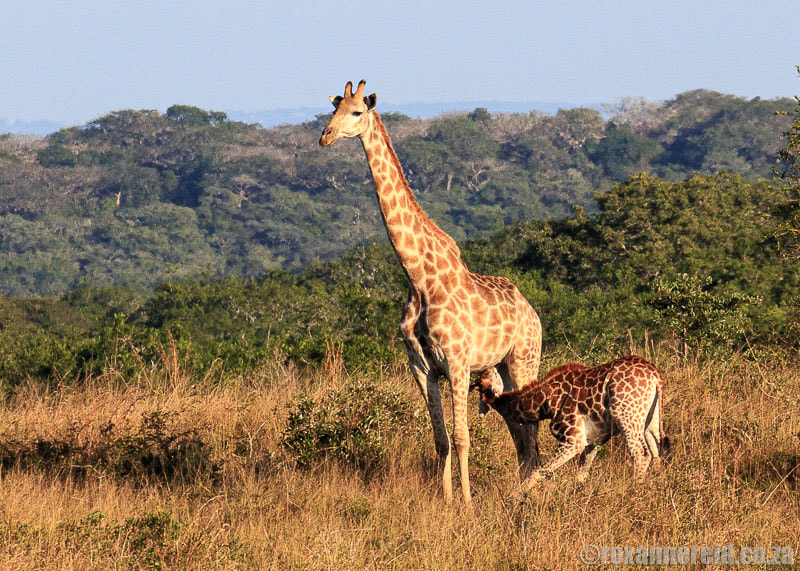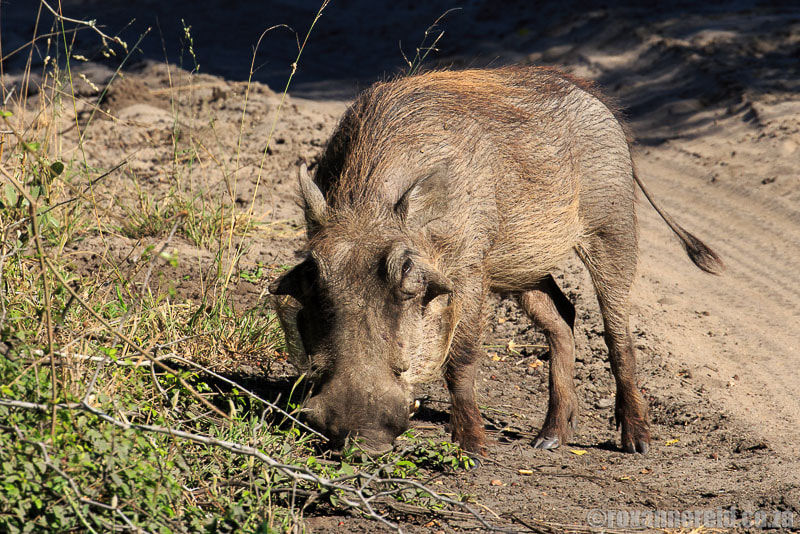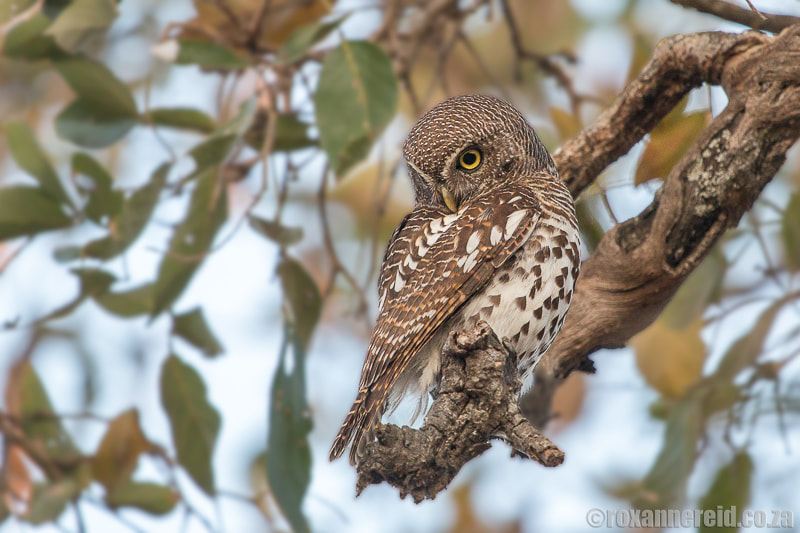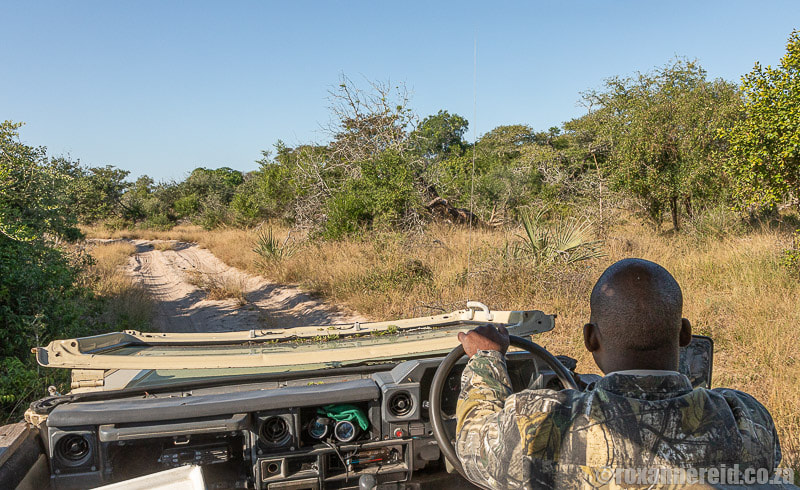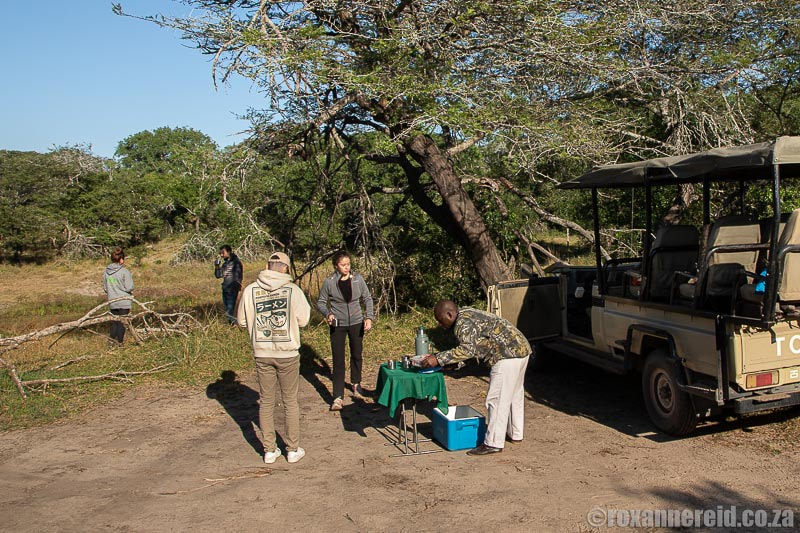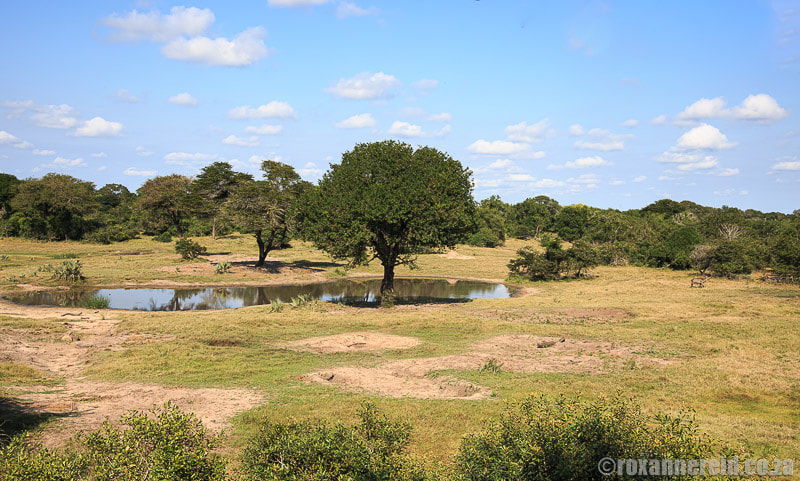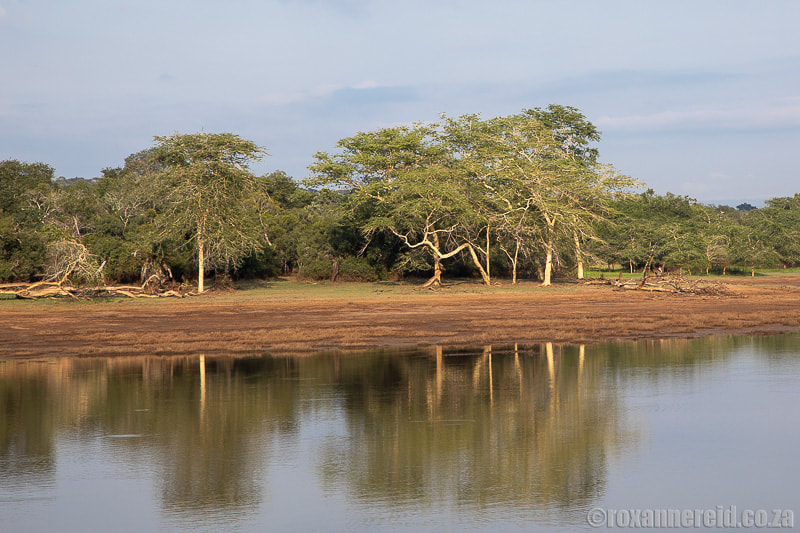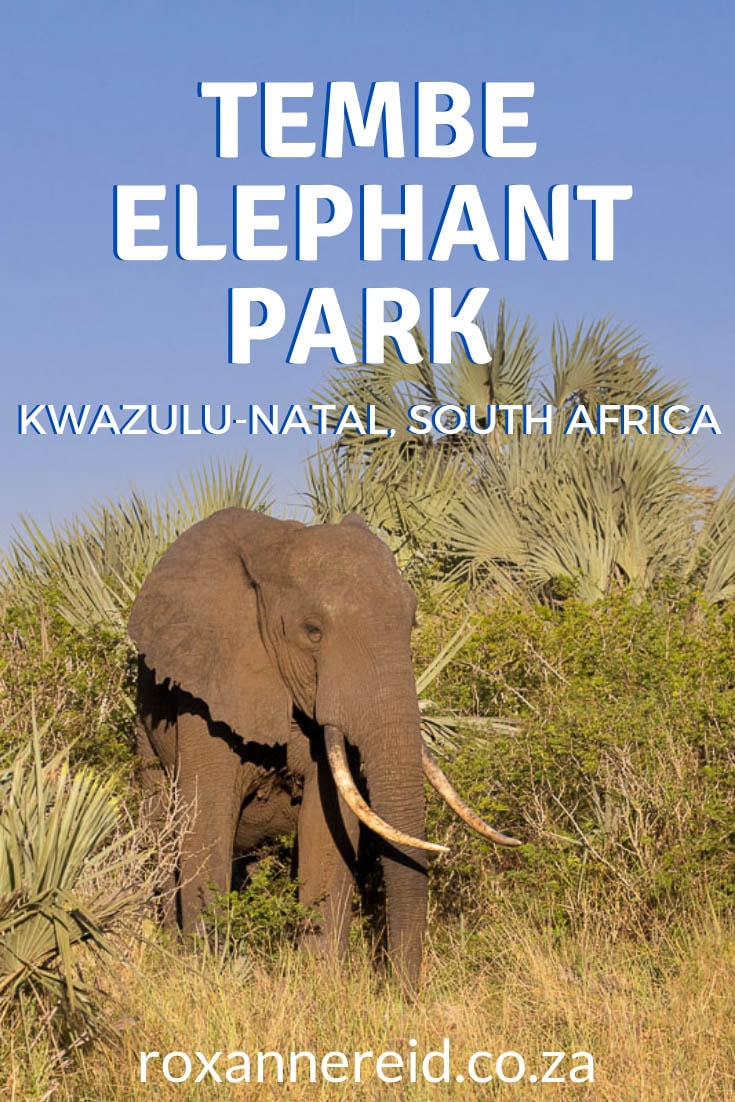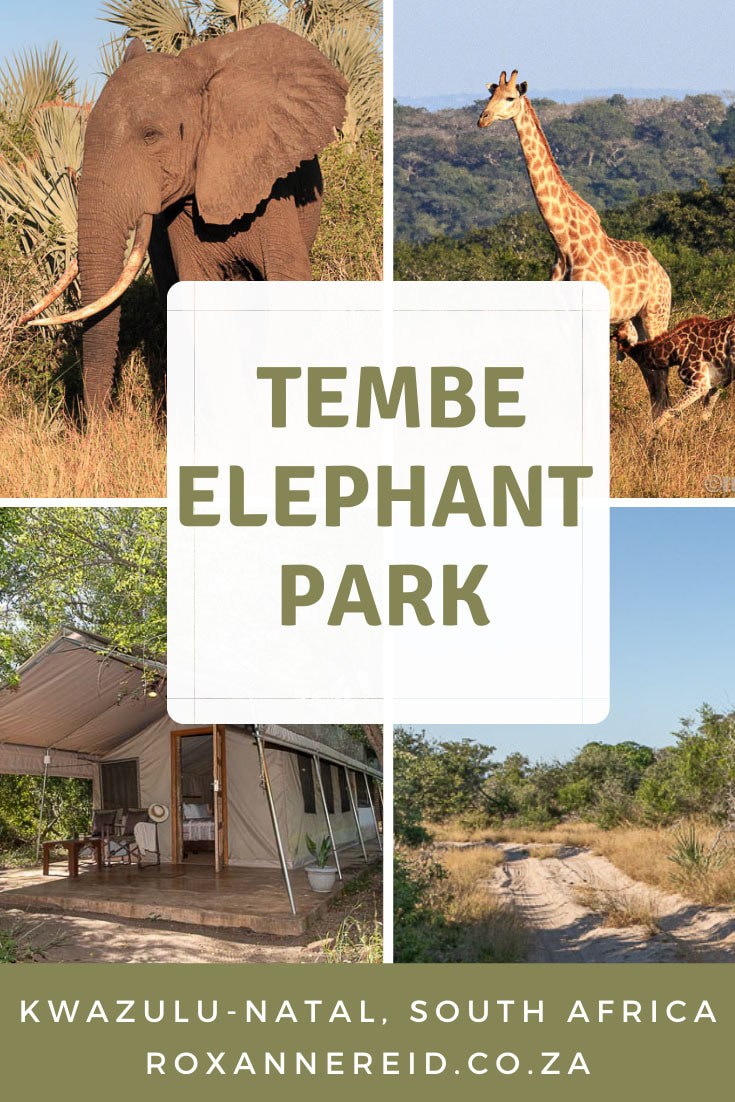By Roxanne Reid
In the far north-east of South Africa, on the border with Mozambique, lies Tembe Elephant Park – a Big Five reserve in KwaZulu-Natal. It’s home to elephants with long tusks, to rhino, lions, leopards, buffalos and wild dogs, all living in a diverse landscape of sand forest, scrub and thornveld. Stay at the rustic lodge offering luxury tents, or visit for the day.
In the far north-east of South Africa, on the border with Mozambique, lies Tembe Elephant Park – a Big Five reserve in KwaZulu-Natal. It’s home to elephants with long tusks, to rhino, lions, leopards, buffalos and wild dogs, all living in a diverse landscape of sand forest, scrub and thornveld. Stay at the rustic lodge offering luxury tents, or visit for the day.
Some 300 square kilometres in size, Tembe Elephant Park was proclaimed a game reserve in 1983 and takes its name from the Tembe people who live in the area. It’s a community-owned reserve co-managed with Ezemvelo KZN Wildlife. Since it’s dominated by sand forests, with tracks of deep sand, you need a 4x4 to drive here.
How to get to Tembe Elephant Park
Tembe is just less than 400km from Durban and 140km from Pongola (72km from Jozini). A 4x4 is essential for driving in the park. If you don’t have one, you can park near the entrance gate and a 4x4 game drive vehicle will shuttle you to the lodge and take you on guided game drives.
Best time to visit Tembe Elephant Park
The dry season (May to August/September) is the best time of year to see wildlife, which is drawn to the waterholes during these months. Days are sunny and warm although nights can be cool in June to August. The rainy season of October to April can be very hot and humid, making game drives less comfortable.
The lodge
The only lodge in the park offers luxury tents and three meals a day. Since most of the lodge staff come from the local Tembe community that owns the land, it contributes directly to job creation and community upliftment. It’s always been one of the more affordable full-service safari experiences in South Africa and, even better, it’s offering special rates for South Africans until 15 December 2021 (check their Facebook page).
Our luxury tent was carved into a private patch of sand forest. Some tents are near the main area but we were a bit further away, giving us the illusion that we had the park to ourselves. It had a king-sized bed, tea station and air conditioner, as well as an open-air hot shower where we could marvel at the stars and eavesdrop on the night sounds of the bush.
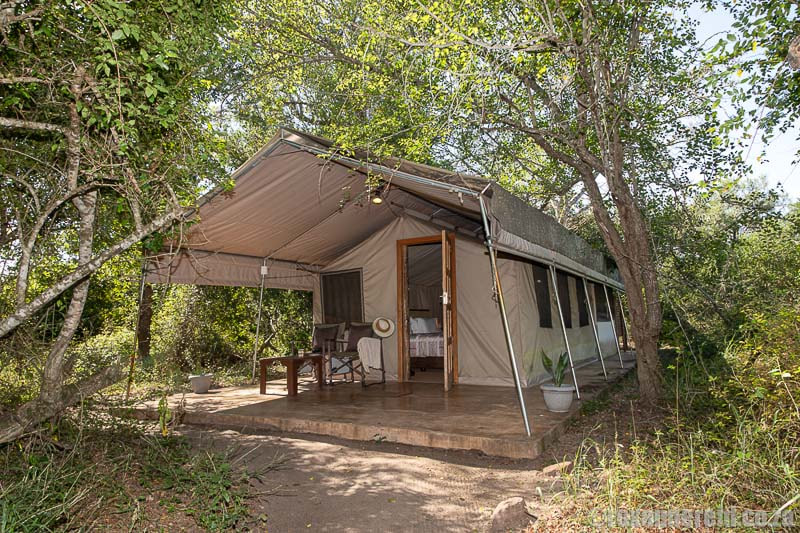 The stoep of the tent, from where you might see nyala or impala might come to visit
The stoep of the tent, from where you might see nyala or impala might come to visit From our camping chairs on the private stoep, we listened to the sound of white-browed scrub-robins, spurfowl and sombre greenbuls. A small group of nyalas came to visit one afternoon, a common occurrence with small animals, although there’s an electric fence around the camp so dangerous animals like elephant and buffalo can’t get in. Each tent also has a spa tent at the back, where you can book a relaxing massage at a very affordable rate.
The thatched bar, dining and lounge areas are a short walk away, all using thatch, reeds and other natural materials to blend in with the surrounding forest. Here we relaxed and ate simply but well. A pool nearby is perfect for hot summer days.
Tembe’s animals
Tembe has one of only three naturally occurring elephant populations in South Africa. In other words, they were roaming free here when the park was declared rather than reintroduced to an area where they had previously died out.
Apart from the big tuskers (elephants with very long tusks) for which it’s famous, Tembe is also home to one of the smallest antelopes in Africa, the suni. Weighing only about 5kg, these reddish-brown antelope are mostly seen in sand forest at twilight or early in the morning. Although they’re listed as a stable species on the IUCN Red Data list, habitat loss means the South African population is vulnerable.
It’s a Big Five reserve and sightings of elephant and buffalo are numerous. Lions were reintroduced in 2002, and you might also see white rhino. Black rhino tend to favour thicket and you’re more likely to spot them after dark. The leopard, as always, is elusive so you’d be extremely lucky to see one. There are also wild dogs, giraffe, Burchell’s zebra, warthog, kudu, common reedbuck, serval and spotted hyena. Look out for both red and grey duiker, side-striped jackal (with the while tip on its tail), banded and slender mongoose. Keep your eyes peeled around the main area at dusk or night-time and you may be lucky enough to see the nocturnal lesser or thick-tailed bushbabies.
The vegetation
Although the elephants and other animals are definitely stars of the show, don’t forget to appreciate the sand forest and the woodlands of black monkey-thorn, buffalo thorn, marula and tamboti. As the guides will remind you, tamboti’s smoke will make you sick so don’t ever make the mistake of using it as braai wood. Few animals feed on it although porcupine, black rhino and giraffe can eat it without ill effect. Other trees to look out for include the beautiful pod mahogany, silver cluster-leaf, magic gwarrie, torchwood and Natal mahogany.
Tembe’s sand dunes are elephant-sized too, with the highest reaching 129m above sea level. Although there are a number of waterholes in the park, the only permanent natural water source is the Muzi Swamp in the east. Mfungeni and Mahlasela pans have water all year round so are particularly good for game viewing in the dry winter months.
Birding at Tembe
Tembe’s diverse habitat of scrub, sand forest and thornveld makes it a good birding destination. Your game drives will be twice as much fun if you stop to watch some of the 340 bird species as well as bigger animals.
Look for species like crowned hornbill, crested guineafowl, Woodward’s batis, pink-throated twinspot, grey waxbill, wood owl, African barred owlet, broadbilled roller, African broadbill and black-bellied korhaan. Raptors include martial eagle and black-chested snake eagle.
Guided drives at Tembe Elephant Park
The guides at Tembe have grown up in the area so they know the land like the back of their hand. They also know the elephants, which are remarkably relaxed around the game vehicles. We saw none of the aggressive antics you might get at Kruger or Pilanesberg national parks, and this makes for close but calm encounters with these giant animals.
On an afternoon drive you’ll probably see lots of nyala and impala, some buffalo, zebra, elephant, grey and red duiker, warthog and perhaps even a giraffe practising osteophagy – gnawing at a bone to get calcium and phosphorus lacking in its diet.
Guided drives at Tembe Elephant Park
The guides at Tembe have grown up in the area so they know the land like the back of their hand. They also know the elephants, which are remarkably relaxed around the game vehicles. We saw none of the aggressive antics you might get at Kruger or Pilanesberg national parks, and this makes for close but calm encounters with these giant animals.
On an afternoon drive you’ll probably see lots of nyala and impala, some buffalo, zebra, elephant, grey and red duiker, warthog and perhaps even a giraffe practising osteophagy – gnawing at a bone to get calcium and phosphorus lacking in its diet.
Early morning game drives are my favourites, possibly with a mist wreathing the trees for a ghostly effect. Then a hot orange sun rises over the horizon and gradually burns off the mist. This is probably the best time to look for predators like lion, leopard, wild dog and hyena.
One benefit of guided game drives over self-driving is that you can sit back and relax, concerning yourself only with looking for animals and birds while the guide does the hard work of driving along the rough sand tracks.
One benefit of guided game drives over self-driving is that you can sit back and relax, concerning yourself only with looking for animals and birds while the guide does the hard work of driving along the rough sand tracks.
Self-driving in Tembe
One thing to know before you self-drive is that you’re not going to see the whole of the park. Only a small part of the south of the park has roads so there’s a lot to the north that remains wilderness that neither self-drives nor guided drives can explore.
No sedans, ‘soft’ luxury SUVs or cross-over type vehicles are allowed to drive in the park. Know that the roads can be rough with sand that is deep and soft (or muddy in the wet season), and that sometimes you will meet another vehicle and have to go off the narrow two-track onto the side so that they can pass. If you’re not confident driving your 4x4 in these conditions, you have the option to join a guided drive (see above).
If you’re self-driving, stop at one of the wildlife hides like Mahlasela in the south-east – the hide made famous by the Tembe Elephant Park webcam. The Ponweni hide is further north-east on the edge of Muzi Swamp. When you get tired of churning through the deep sand, take a break at Manungu picnic site in the centre of the park. There are toilets here and at both hides.
Day visitors at Tembe
Even if you’re not staying at the lodge you can visit for the day if you have your own proper 4x4. Spend at least some of your time at Mahlasela hide. There’s no need for 4x4 drivers to book ahead for a day visit.
If you don’t have a 4x4, however, you can still join a day drive in an open safari vehicle. These three-hour guided drives start at 10:00 and it’s essential that you book ahead.
Safety tips for watching elephants
The Tembe elephants are usually fairly chilled, but remember that the most important rule around any elephants is to keep your distance and be quiet. Always give elephants the right of way. Be extra careful with breeding herds because females can be belligerent if they think their calves are in danger. Give testosterone-fuelled bulls in musth a wide berth. You’ll know them by the contant dribbling of urine on their hind legs and the dark liquid dripping from their temporal glands between their eyes and ear holes.
For more tips on how to know when elephants are becoming annoyed at your presence – and what to do about it – see How to stay safe while watching elephants in the wild.
Other things to do in the wider area
Day visitors at Tembe
Even if you’re not staying at the lodge you can visit for the day if you have your own proper 4x4. Spend at least some of your time at Mahlasela hide. There’s no need for 4x4 drivers to book ahead for a day visit.
If you don’t have a 4x4, however, you can still join a day drive in an open safari vehicle. These three-hour guided drives start at 10:00 and it’s essential that you book ahead.
Safety tips for watching elephants
The Tembe elephants are usually fairly chilled, but remember that the most important rule around any elephants is to keep your distance and be quiet. Always give elephants the right of way. Be extra careful with breeding herds because females can be belligerent if they think their calves are in danger. Give testosterone-fuelled bulls in musth a wide berth. You’ll know them by the contant dribbling of urine on their hind legs and the dark liquid dripping from their temporal glands between their eyes and ear holes.
For more tips on how to know when elephants are becoming annoyed at your presence – and what to do about it – see How to stay safe while watching elephants in the wild.
Other things to do in the wider area
- Ndumo Game Reserve with its 430 bird species is only 32km from Tembe but a world away. Don’t miss Nyamithi Pan for fever trees, hippos, crocs and lots of water birds. The best thing to do here is a bird walk or drive with one of the knowledgeable guides.
- Just an hour’s drive away are iSimangaliso Wetland Park’s Kosi Bay and Kosi Mouth with their sustainable Tsonga fishing traps, snorkelling and fishing.
- Go turtle tracking with a guide. Mid-October to mid-February is egg laying and hatching time for loggerhead and leatherback turtles on the beaches near Kosi Bay.
- Go canoeing on the Kosi lakes and channels, with a chance to see mangroves, raffia palms, hippos and crocs as well as birds like Pels fishing-owl, African fish-eagle, palm-nut vulture and African finfoot.
- The southern Mozambican resorts of Ponta do Ouro and Ponta Malongane are only about 10km from the South African border at Kosi Bay, which is an hour’s drive from Tembe. They offer beautiful beaches, great snorkelling and diving, dune forests and interesting little cantinas. Don’t forget to bring your passport. (Remember, however, that during these times of Covid-19 you need a PCR test not older than 72 hours from date of departure and that Mozambique’s beaches are currently closed for recreational activities like swimming, diving and fishing.)
You may also enjoy
Kosi Forest Lodge – a romantic forest setting
16 things to do at Ithala Game Reserve, KwaZulu-Natal
Game reserves in KZN for a South African safari
Like it? Pin this image!
Copyright © Roxanne Reid - No words or photographs on this site may be used without permission from roxannereid.co.za
